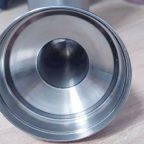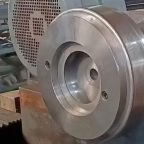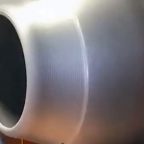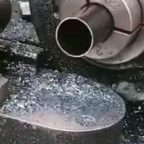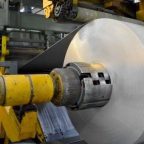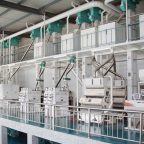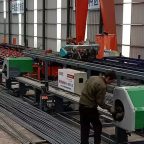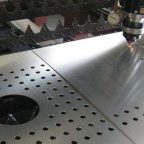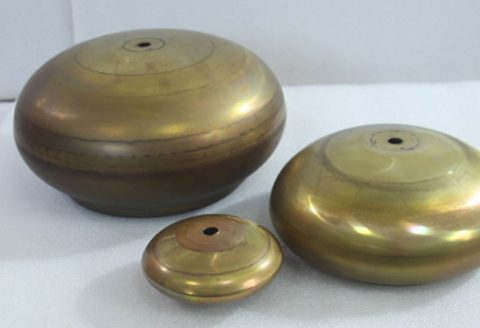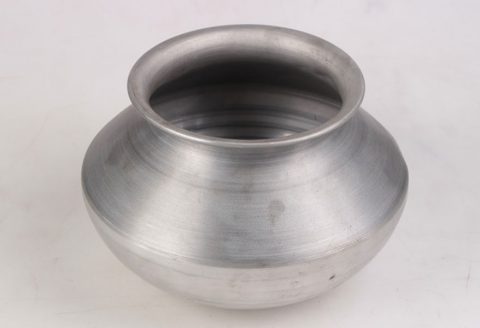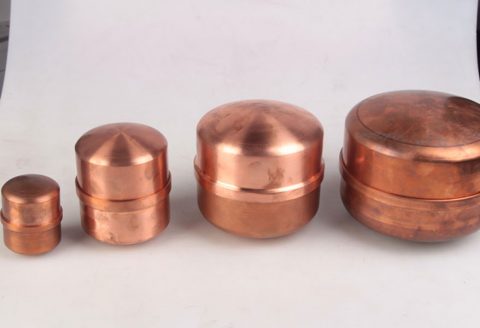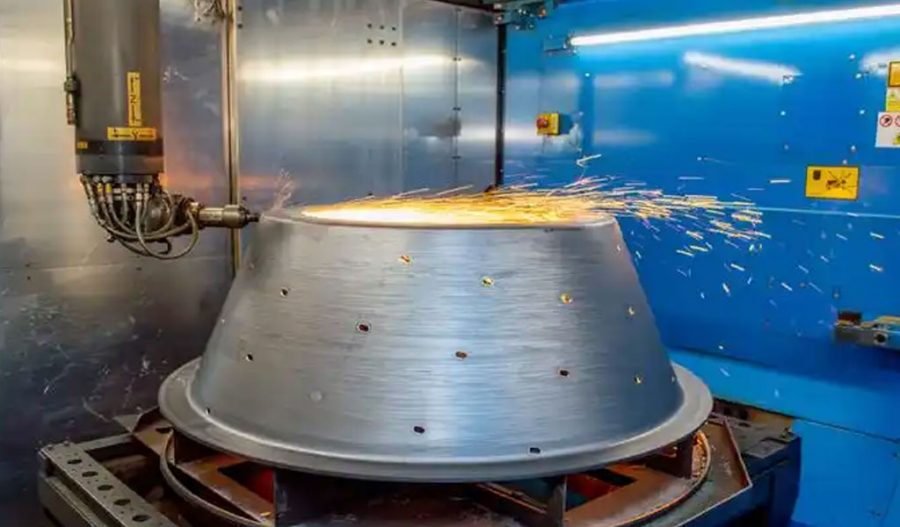
The integration of advanced manufacturing technologies has revolutionized the production of high-performance components across industries such as aerospace, automotive, biomedical, and energy. Among these technologies, Computer Numerical Control (CNC) spinning and additive manufacturing (AM) have emerged as pivotal processes, each offering unique capabilities in shaping materials with precision and efficiency. CNC spinning, a traditional subtractive and forming technique, excels in producing rotationally symmetric components with superior surface finishes and structural integrity. Additive manufacturing, often referred to as 3D printing, enables the fabrication of complex geometries layer by layer, offering unparalleled design flexibility and material efficiency. The convergence of these two processes—termed composite process research—seeks to harness their complementary strengths, addressing limitations inherent in each when used independently.
This article provides a comprehensive exploration of the composite process research involving CNC spinning and additive manufacturing. It examines the theoretical foundations, technological advancements, material considerations, process parameters, applications, challenges, and future directions of this hybrid approach. By synthesizing recent studies and industry developments, the article aims to offer a detailed resource for researchers, engineers, and practitioners interested in advancing manufacturing science. Detailed tables are included to compare key aspects of CNC spinning, additive manufacturing, and their hybrid integration, facilitating a clear understanding of their synergies and trade-offs.
Historical Context and Evolution
CNC Spinning: Origins and Development
CNC spinning, a modern evolution of manual metal spinning, traces its roots to ancient craftsmanship techniques used to form metals into symmetrical shapes. Traditional spinning involved manually rotating a metal blank against a mandrel to shape it using tools, a process reliant on artisan skill. The advent of computer numerical control in the mid-20th century transformed this practice, introducing automation, precision, and repeatability. CNC spinning employs programmable machinery to control the spinning lathe, enabling the production of complex, rotationally symmetric components such as cones, cylinders, and hemispheres with minimal human intervention.
The process typically involves securing a flat or preformed metal blank to a rotating mandrel, where rollers apply controlled pressure to deform the material incrementally. CNC spinning is classified into conventional spinning, which maintains the blank’s thickness, and shear spinning, which reduces thickness to achieve specific geometries. Advances in CNC technology, including multi-axis control and real-time monitoring, have expanded the process’s capabilities, allowing for the forming of high-strength alloys, composites, and non-metallic materials.
Additive Manufacturing: A Paradigm Shift
Additive manufacturing emerged in the 1980s with the development of stereolithography (SLA), a process that solidified photopolymer resins layer by layer using ultraviolet light. Since then, AM has evolved into a diverse family of technologies, including Fused Deposition Modeling (FDM), Selective Laser Sintering (SLS), Selective Laser Melting (SLM), Directed Energy Deposition (DED), and Material Jetting, among others. Unlike subtractive methods, AM builds components by depositing material incrementally, guided by digital models created through computer-aided design (CAD) software.
AM’s ability to produce complex geometries without the need for tooling has disrupted traditional manufacturing, enabling rapid prototyping, customization, and on-demand production. The technology supports a wide range of materials, including polymers, metals, ceramics, and composites, with applications spanning medical implants, aerospace components, and consumer goods. Recent advancements in AM, such as multi-material printing and in-situ process monitoring, have further enhanced its precision and scalability, positioning it as a cornerstone of Industry 4.0.
Emergence of Composite Processes
The concept of composite or hybrid manufacturing arose from the recognition that no single process could address all manufacturing challenges. CNC spinning excels in producing large, rotationally symmetric components with excellent mechanical properties but is limited in creating complex internal structures or non-symmetric geometries. Conversely, AM offers design freedom but often struggles with surface quality, dimensional accuracy, and production speed for large-scale parts. By combining CNC spinning and AM, researchers aim to leverage the strengths of both processes while mitigating their weaknesses.
Early efforts in composite process research focused on sequential integration, where AM was used to create preforms or complex features, followed by CNC spinning to enhance surface finish or structural integrity. More recent studies have explored simultaneous or interleaved processes, where AM and CNC spinning are performed in a single setup, often using hybrid machines equipped with both deposition and forming capabilities. These advancements have been driven by innovations in machine design, process control, and material science, paving the way for new manufacturing paradigms.
Theoretical Foundations
Mechanics of CNC Spinning
CNC spinning relies on the principles of plastic deformation, where a material is subjected to controlled forces to achieve permanent shape change without fracturing. The process involves three primary stages: blank preparation, forming, and finishing. During forming, the roller applies localized pressure to the rotating blank, inducing compressive and shear stresses that cause the material to flow over the mandrel. The mechanics of spinning are governed by factors such as:
- Material properties: Yield strength, ductility, and work-hardening behavior influence the material’s response to deformation.
- Process parameters: Roller feed rate, spindle speed, and roller geometry affect the quality and efficiency of forming.
- Friction and lubrication: The interaction between the blank, mandrel, and roller impacts material flow and surface finish.
The stress-strain relationship in CNC spinning is complex, as the material undergoes non-uniform deformation. Finite element analysis (FEA) is commonly used to model these interactions, predicting defects such as wrinkling, thinning, or cracking. Recent research has focused on optimizing process parameters to minimize residual stresses and improve dimensional accuracy, particularly for high-strength materials like titanium alloys and composites.
Principles of Additive Manufacturing
Additive manufacturing operates on the principle of layer-by-layer material deposition, guided by a digital model. The process begins with the creation of a 3D CAD model, which is sliced into thin layers using specialized software. Each layer is then deposited or solidified using techniques such as:
- Material Extrusion: Melting and extruding a filament through a nozzle (e.g., FDM).
- Powder Bed Fusion: Selectively melting or sintering powder particles using a laser or electron beam (e.g., SLS, SLM).
- Directed Energy Deposition: Depositing material via a focused energy source, often for metal or composite parts (e.g., DED).
The quality of AM parts depends on factors such as layer thickness, energy input, and material properties. Key challenges include managing thermal gradients, which can cause residual stresses or warping, and ensuring interlayer bonding for mechanical strength. Advanced AM systems incorporate real-time monitoring and feedback control to optimize these parameters, improving part reliability and performance.
Synergies in Composite Processes
The integration of CNC spinning and AM creates a synergistic effect, combining the precision and strength of forming with the flexibility of additive processes. The composite process can be categorized into three approaches:
- Sequential Integration: AM is used to create a preform or add complex features, followed by CNC spinning to refine the shape or enhance properties. For example, AM can produce a near-net-shape component with internal lattices, which is then spun to achieve a smooth surface and precise dimensions.
- Simultaneous Integration: Both processes are performed concurrently in a hybrid machine, allowing for real-time interaction between deposition and forming. This approach is ideal for producing multi-material or functionally graded components.
- Interleaved Integration: The processes alternate within a single workflow, with AM adding material and CNC spinning shaping it iteratively. This method is suited for applications requiring precise control over material distribution and geometry.
The theoretical foundation of composite processes lies in understanding the interplay between deposition and deformation. AM introduces microstructural variations, such as porosity or anisotropy, which affect the material’s behavior during spinning. Conversely, CNC spinning can alter the microstructure of AM parts, potentially improving grain alignment or reducing defects. Computational models, including coupled thermomechanical simulations, are critical for predicting these interactions and optimizing process parameters.
Technological Advancements
CNC Spinning Innovations
Recent advancements in CNC spinning have focused on enhancing automation, precision, and material compatibility. Key developments include:
- Multi-Axis CNC Systems: Modern spinning machines feature up to six axes of control, enabling the production of complex geometries with minimal tool changes. These systems use advanced servo motors and sensors for precise roller positioning.
- Adaptive Control: Real-time monitoring of forces, temperatures, and material flow allows for adaptive adjustments during spinning, reducing defects and improving efficiency. Machine learning algorithms are increasingly used to optimize tool paths and process parameters.
- Tooling Innovations: Diamond-coated or ceramic rollers have improved wear resistance, extending tool life when spinning abrasive materials like composites or high-strength alloys.
- Hybrid Machines: Some CNC spinning machines are equipped with additive capabilities, such as laser deposition heads, enabling seamless integration with AM processes.
These advancements have expanded the range of materials suitable for CNC spinning, including fiber-reinforced composites, metal matrix composites (MMCs), and advanced polymers. For example, carbon fiber-reinforced polymers (CFRPs) can be spun to produce lightweight, high-strength components for aerospace applications.
Additive Manufacturing Breakthroughs
AM technologies have seen rapid progress in recent years, driven by innovations in hardware, software, and materials. Notable advancements include:
- Multi-Material Printing: Systems capable of depositing multiple materials in a single build, such as metals and polymers, enable the creation of functionally graded structures. This is particularly relevant for composite processes, where AM can introduce tailored material properties before spinning.
- High-Speed AM: Technologies like Multi Jet Fusion (MJF) and high-speed SLM have reduced build times, making AM viable for large-scale production. These systems are critical for producing preforms for CNC spinning.
- In-Situ Monitoring: Sensors for temperature, laser power, and layer quality provide real-time feedback, improving part consistency and reducing defects. This is essential for ensuring the quality of AM preforms used in hybrid processes.
- Sustainable Materials: The development of bio-based polymers, recycled metals, and waste-derived composites has enhanced the sustainability of AM, aligning with the goals of composite process research.
These breakthroughs have made AM a viable partner for CNC spinning, enabling the production of complex preforms that can be further refined through forming.
Hybrid Machine Development
The development of hybrid machines capable of performing both CNC spinning and AM is a cornerstone of composite process research. These machines integrate deposition heads, rollers, and multi-axis control systems within a single workspace, allowing for seamless transitions between additive and forming operations. Key features of hybrid machines include:
- Modular Design: Interchangeable heads for deposition, spinning, and machining enable flexibility in process selection.
- Integrated Control Systems: Unified software platforms coordinate AM and spinning operations, optimizing tool paths and minimizing setup times.
- Thermal Management: Advanced cooling systems manage heat buildup during AM, ensuring compatibility with subsequent spinning processes.
- Material Handling: Automated systems for powder or filament delivery and blank positioning streamline workflows, reducing manual intervention.
Examples of hybrid machines include the Bridgeport VMC 500 XP, modified with a Fronius CMT welding unit for wire arc additive manufacturing (WAAM) and spinning, and custom-built systems developed by research institutions like the Oak Ridge National Laboratory (ORNL). These machines have demonstrated the ability to produce high-precision, multi-material components with reduced lead times and costs.
Material Considerations
Materials for CNC Spinning
CNC spinning is traditionally associated with metals such as aluminum, steel, and titanium, which offer excellent ductility and formability. However, recent research has expanded the material palette to include:
- High-Strength Alloys: Titanium alloys (e.g., Ti-6Al-4V) and nickel-based superalloys (e.g., Inconel 625) are used for aerospace and energy applications, requiring precise control to prevent cracking.
- Composites: Fiber-reinforced polymers (e.g., CFRPs) and metal matrix composites (MMCs) are increasingly spun to produce lightweight, high-strength components. These materials pose challenges due to their anisotropic properties and potential for delamination.
- Polymers and Ceramics: Advanced polymers like PEEK and ceramics like alumina are spun for specialized applications, often requiring modified tooling and process parameters.
The choice of material affects spinning parameters, such as roller pressure and feed rate, and requires tailored lubrication to minimize friction and wear.
Materials for Additive Manufacturing
AM supports a broad range of materials, each suited to specific processes and applications. Common materials include:
- Polymers: Thermoplastics like PLA, ABS, and nylon are widely used in FDM and SLS, offering flexibility and cost-effectiveness. Polymer composites, such as carbon fiber-reinforced PLA, enhance mechanical properties.
- Metals: Stainless steel, titanium, and aluminum alloys are processed via SLM or DED, providing high strength and corrosion resistance. Inconel 625, for example, is used in WAAM for high-temperature applications.
- Ceramics and Composites: Alumina, zirconia, and carbon fiber-reinforced composites are used in SLS and DED, offering unique properties like thermal stability and lightweight strength.
In composite processes, AM materials must be compatible with subsequent spinning, requiring sufficient ductility and thermal stability to withstand deformation.
Material Interactions in Composite Processes
The integration of CNC spinning and AM introduces complex material interactions, as the microstructure and properties of AM parts differ from those of conventionally processed materials. Key considerations include:
- Microstructural Effects: AM parts often exhibit porosity, anisotropic grain structures, and residual stresses, which can affect their behavior during spinning. Spinning can refine the microstructure, reducing porosity and improving grain alignment, but excessive deformation may introduce new defects.
- Interfacial Bonding: In multi-material components, the interface between AM-deposited and spun regions is critical. Poor bonding can lead to delamination or cracking, necessitating optimized process parameters and surface treatments.
- Thermal Compatibility: AM processes introduce thermal gradients that may alter the material’s properties, affecting its formability during spinning. Preheating or annealing may be required to ensure compatibility.
Recent studies have explored the use of functionally graded materials (FGMs), where AM deposits materials with varying compositions or properties, followed by spinning to achieve desired shapes. For example, a gradient from Inconel 718 to ceramic powder can be created via DED and then spun to form a high-strength, heat-resistant component.
Process Parameters and Optimization
CNC Spinning Parameters
The quality and efficiency of CNC spinning depend on several process parameters, which must be carefully controlled to achieve desired outcomes. These include:
- Spindle Speed: Determines the rotational velocity of the blank, affecting material flow and heat generation. Typical speeds range from 100 to 2000 RPM, depending on the material and geometry.
- Roller Feed Rate: Controls the speed at which the roller moves across the blank, influencing deformation rate and surface finish. Feed rates typically range from 0.5 to 5 mm/s.
- Roller Geometry: The shape and size of the roller (e.g., radius, angle) affect contact pressure and material flow. Smaller rollers are used for intricate details, while larger rollers are suited for bulk deformation.
- Lubrication: Reduces friction and heat, preventing material adhesion and tool wear. Common lubricants include oil-based emulsions and graphite-based coatings.
Optimization techniques, such as Design of Experiments (DOE) and machine learning, are used to identify ideal parameter combinations, minimizing defects like wrinkling or thinning.
Additive Manufacturing Parameters
AM processes involve a distinct set of parameters, which vary by technology but generally include:
- Layer Thickness: Determines the resolution and build time, typically ranging from 20 to 100 µm for SLM and 100 to 400 µm for FDM. Thinner layers improve accuracy but increase build time.
- Energy Input: Laser power, electron beam intensity, or extrusion temperature affects material melting or curing. For SLM, laser power ranges from 100 to 400 W.
- Scan Speed: The speed at which the energy source moves across the build area, influencing thermal gradients and part quality. Scan speeds for SLM typically range from 500 to 2000 mm/s.
- Material Flow Rate: Controls the rate of material deposition, critical for extrusion-based processes like FDM and WAAM.
Parameter optimization in AM often involves balancing build speed, part quality, and material properties, using tools like computational fluid dynamics (CFD) and thermal modeling.
Composite Process Parameters
In composite processes, the interaction between CNC spinning and AM parameters is critical. For example, the layer thickness of an AM preform affects its surface roughness, which in turn influences the friction and material flow during spinning. Similarly, the thermal history of an AM part can alter its ductility, requiring adjustments in spinning parameters. Key considerations include:
- Preform Design: The geometry and material distribution of the AM preform must be optimized for spinning, ensuring sufficient material for deformation without excessive waste.
- Interprocess Timing: The time between AM deposition and spinning affects material properties, as cooling or aging can alter ductility and residual stresses.
- Tool Path Coordination: In hybrid machines, the tool paths for deposition and spinning must be synchronized to avoid collisions and ensure dimensional accuracy.
Advanced optimization techniques, such as multi-objective genetic algorithms and coupled thermomechanical simulations, are used to fine-tune these parameters, achieving high-quality components with minimal defects.
Applications
Aerospace
The aerospace industry is a primary beneficiary of composite CNC spinning and AM processes, where lightweight, high-strength components are critical. Applications include:
- Turbine Blades: AM is used to create complex internal cooling channels, followed by CNC spinning to achieve precise external geometries and smooth surfaces. Materials like Inconel 625 and titanium alloys are commonly used.
- Structural Components: Hybrid processes produce lightweight fuselage sections and wing components, combining AM’s ability to create lattice structures with spinning’s strength and surface quality.
- Propulsion Systems: Nozzles and combustion chambers benefit from the ability to integrate multi-material gradients, enhancing thermal and mechanical performance.
A notable example is the production of a functionally graded nozzle, where DED deposits a gradient from Inconel to ceramic, and CNC spinning refines the shape, achieving a 45% weight reduction compared to traditional methods.
Automotive
In the automotive sector, composite processes enable the production of lightweight, durable components that improve fuel efficiency and performance. Applications include:
- Wheel Rims: AM creates complex rim designs with internal reinforcements, followed by spinning to achieve high-strength, polished surfaces. Aluminum and CFRP composites are common materials.
- Suspension Components: Hybrid processes produce tailored components with optimized material distribution, enhancing strength-to-weight ratios.
- Battery Enclosures: For electric vehicles, AM and spinning create lightweight, thermally conductive enclosures, combining AM’s design flexibility with spinning’s structural integrity.
Biomedical
The biomedical field leverages composite processes for customized implants and prosthetics. Applications include:
- Orthopedic Implants: AM produces porous structures for bone integration, while spinning ensures smooth surfaces for biocompatibility. Titanium and PLA composites are widely used.
- Dental Prostheses: Hybrid processes create precise, patient-specific prostheses with tailored material properties, improving fit and durability.
- Surgical Tools: Lightweight, ergonomic tools are produced using AM for complex geometries and spinning for refined surfaces.
A study demonstrated the use of AM to create a porous titanium implant, followed by spinning to achieve a polished surface, resulting in improved osseointegration and patient outcomes.
Energy
In the energy sector, composite processes are used to produce components for renewable and conventional systems. Applications include:
- Wind Turbine Blades: AM creates lightweight, reinforced blade structures, while spinning ensures aerodynamic shapes and durability. CFRP composites are commonly used.
- Nuclear Reactor Components: Hybrid processes produce high-strength, heat-resistant components, such as fuel rod cladding, using materials like Inconel and ceramics.
- Oil and Gas Pipelines: AM and spinning create corrosion-resistant, lightweight pipes with tailored material gradients.
Challenges
Technical Challenges
The integration of CNC spinning and AM presents several technical challenges:
- Material Compatibility: AM parts often exhibit porosity and anisotropy, which can lead to defects during spinning. Ensuring material compatibility requires careful selection and preprocessing.
- Process Synchronization: Coordinating AM and spinning in hybrid machines is complex, as differences in build rates and thermal profiles can cause delays or defects.
- Tool Wear: Spinning abrasive materials like CFRPs or ceramics increases tool wear, necessitating advanced tooling materials and frequent maintenance.
- Residual Stresses: Both AM and spinning introduce residual stresses, which can accumulate in hybrid processes, leading to warping or cracking.
Economic and Scalability Issues
Economic challenges include the high cost of hybrid machines, which require significant investment in hardware, software, and training. Scalability is also a concern, as AM processes are typically slower than traditional manufacturing, limiting their use in high-volume production. The cost of materials, particularly advanced composites and alloys, further impacts economic viability.
Environmental and Sustainability Concerns
While AM reduces material waste compared to subtractive methods, it is energy-intensive, particularly for metal processes like SLM. CNC spinning, while efficient, generates scrap during blank preparation and finishing. The environmental impact of hybrid processes depends on material selection and energy efficiency, with ongoing research exploring sustainable alternatives like recycled composites and bio-based polymers.
Future Directions
Advancements in Hybrid Machines
The development of next-generation hybrid machines is a priority, with research focusing on:
- Integrated Sensing: Advanced sensors for real-time monitoring of material properties, stresses, and defects will improve process control and part quality.
- AI-Driven Optimization: Machine learning and artificial intelligence will enable predictive modeling and adaptive control, optimizing tool paths and parameters in real time.
- Scalable Designs: Modular, scalable machines will support a range of applications, from small-scale prototyping to large-scale production.
Material Innovations
Future research will explore new materials tailored for composite processes, including:
- Functionally Graded Materials: FGMs with tailored gradients in composition and properties will enhance performance in aerospace and biomedical applications.
- Sustainable Composites: Bio-based polymers, recycled metals, and waste-derived composites will improve the sustainability of hybrid processes.
- Self-Healing Materials: Materials with self-healing properties could extend component lifespans, particularly in high-stress applications.
Process Optimization
Advances in computational modeling and simulation will drive process optimization, enabling:
- Coupled Simulations: Integrated thermomechanical models will predict material behavior across AM and spinning, reducing trial-and-error.
- Digital Twins: Virtual replicas of hybrid processes will enable real-time monitoring and predictive maintenance, improving efficiency and reliability.
- Multi-Objective Optimization: Algorithms balancing quality, speed, and cost will streamline workflows, making hybrid processes more competitive.
Industry Adoption
Widespread adoption of composite processes will require:
- Standardization: Developing industry standards for hybrid processes and materials will ensure consistency and interoperability.
- Workforce Training: Educating engineers and technicians in hybrid manufacturing will address skill gaps and promote adoption.
- Cost Reduction: Innovations in machine design, materials, and process efficiency will lower costs, making hybrid processes viable for SMEs and high-volume production.
Comparative Analysis
The following tables provide a detailed comparison of CNC spinning, additive manufacturing, and their composite integration, highlighting key attributes, advantages, and limitations.
Table 1: Comparison of CNC Spinning and Additive Manufacturing
| Attribute | CNC Spinning | Additive Manufacturing |
|---|---|---|
| Process Type | Subtractive/Forming | Additive |
| Material Compatibility | Metals (aluminum, steel, titanium), composites (CFRP, MMC), some polymers | Polymers (PLA, ABS, nylon), metals (titanium, Inconel), ceramics, composites |
| Geometric Capability | Rotationally symmetric shapes (cones, cylinders, hemispheres) | Complex, non-symmetric geometries, lattices, internal structures |
| Surface Finish | Excellent (Ra < 1 µm achievable) | Moderate to poor (Ra 5–50 µm, depending on process) |
| Dimensional Accuracy | High (±0.05 mm) | Moderate (±0.1–0.5 mm, depending on process) |
| Production Speed | Fast for symmetric parts (minutes per part) | Slow for complex parts (hours to days) |
| Material Waste | Moderate (scrap from blank preparation) | Low (near-net-shape production) |
| Cost | Moderate (tooling and setup costs) | High (equipment and material costs) |
| Applications | Aerospace (nozzles), automotive (rims), energy (pipes) | Aerospace (turbine blades), biomedical (implants), consumer goods |
| Limitations | Limited to symmetric geometries, tool wear with composites | Surface quality, build speed, residual stresses |
Table 2: Advantages and Limitations of Composite Processes
| Aspect | Advantages | Limitations |
|---|---|---|
| Design Flexibility | Combines AM’s complex geometries with spinning’s precision | Requires careful preform design to ensure spinnability |
| Material Properties | Enhanced strength and surface finish through spinning of AM parts | Microstructural inconsistencies from AM may affect spinning performance |
| Production Efficiency | Reduced lead times by combining processes in a single workflow | Slower than traditional methods due to AM build times |
| Cost Efficiency | Minimizes material waste and tooling costs compared to subtractive methods | High initial investment in hybrid machines and materials |
| Scalability | Suitable for low- to medium-volume production with high customization | Limited scalability for high-volume production due to AM constraints |
| Sustainability | Reduced waste and potential for sustainable materials | Energy-intensive AM processes and scrap from spinning |
Table 3: Case Studies of Composite Process Applications
| Application | Materials | Process Description | Outcomes |
|---|---|---|---|
| Aerospace Nozzle | Inconel 718, Ceramic | DED for gradient preform, CNC spinning for shape refinement | 45% weight reduction, enhanced thermal resistance |
| Automotive Wheel Rim | Aluminum, CFRP | FDM for reinforced preform, CNC spinning for polished surface | Improved strength-to-weight ratio, reduced production time |
| Orthopedic Implant | Titanium, PLA | SLM for porous structure, CNC spinning for smooth surface | Enhanced osseointegration, improved patient outcomes |
| Wind Turbine Blade | CFRP | FDM for lattice core, CNC spinning for aerodynamic shape | Lightweight, durable blade with optimized aerodynamics |
Conclusion
The composite process research of CNC spinning and additive manufacturing represents a transformative approach to modern manufacturing, combining the precision and strength of forming with the flexibility and customization of 3D printing. By leveraging the complementary strengths of these technologies, researchers and engineers can produce high-performance components with complex geometries, tailored material properties, and reduced waste. The integration of advanced materials, hybrid machines, and computational tools has driven significant progress, enabling applications in aerospace, automotive, biomedical, and energy sectors.
Despite these advancements, challenges remain, including material compatibility, process synchronization, and economic scalability. Future research will focus on developing next-generation hybrid machines, sustainable materials, and optimized processes, supported by AI-driven modeling and standardization efforts. As these barriers are overcome, composite processes are poised to redefine manufacturing, offering innovative solutions to meet the demands of a rapidly evolving industrial landscape.
Maximize Tooling and CNC Metal Spinning Capabilities.

At BE-CU China Metal Spinning company, we make the most of our equipment while monitoring signs of excess wear and stress. In addition, we look into newer, modern equipment and invest in those that can support or increase our manufacturing capabilities. Our team is very mindful of our machines and tools, so we also routinely maintain them to ensure they don’t negatively impact your part’s quality and productivity.
Talk to us today about making a rapid prototype with our CNC metal spinning service. Get a direct quote by chatting with us here or request a free project review.
BE-CU China CNC Metal Spinning service include : CNC Metal Spinning,Metal Spinning Die,Laser Cutting, Tank Heads Spinning,Metal Hemispheres Spinning,Metal Cones Spinning,Metal Dish-Shaped Spinning,Metal Trumpet Spinning,Metal Venturi Spinning,Aluminum Spinning Products,Stainless Steel Spinning Products,Copper Spinning Products,Brass Spinning Products,Steel Spinning Product,Metal Spinnin LED Reflector,Metal Spinning Pressure Vessel,
